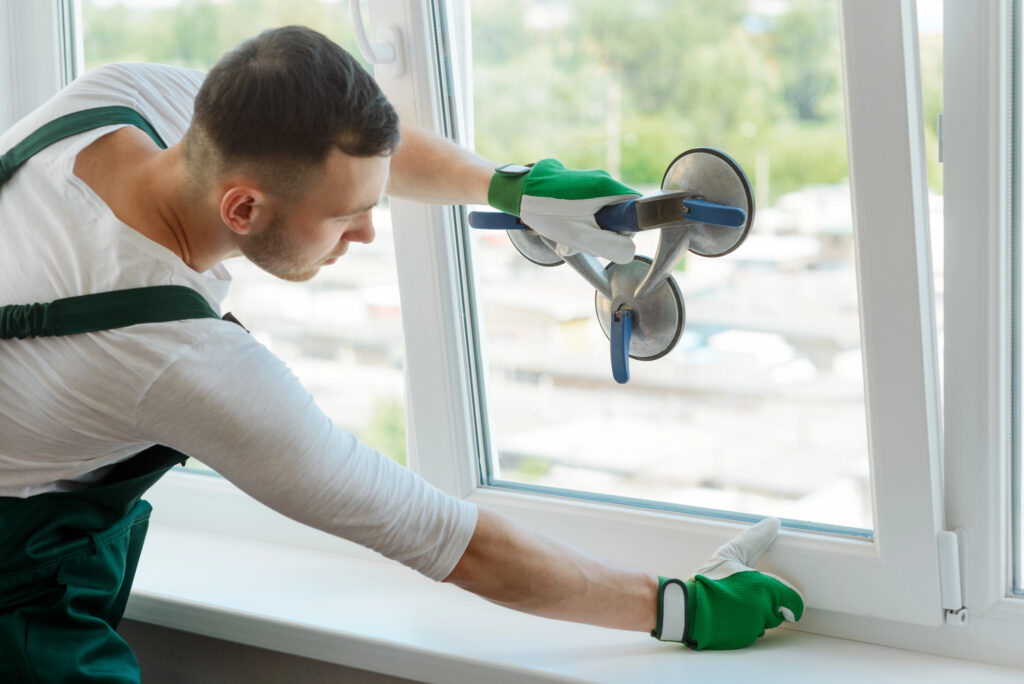Replacing windows is a significant home improvement project that affects the look, comfort, and efficiency of your home. Knowing the different types of window installation is important when planning such an upgrade. If you are addressing aging windows, improving energy efficiency, or changing window styles, choosing the right installation method will determine the success of the project.
This article explains the two primary methods of window installation—full-frame and insert window installation—and highlights their benefits, challenges, and ideal applications. Additionally, we will explore how window styles and materials influence these installations to help you make informed decisions.
Full-Frame Window Installation: A Comprehensive Transformation
Full-frame window installation replaces the entire window unit, including the frame, trim, and sills. This method is best for homes where the existing window frame is damaged or outdated. With a bare opening, full-frame installation allows you to completely rebuild the structure and install modern materials.
When is Full-Frame Installation Suitable?
This method is ideal for situations where the frame is deteriorating, the house is older, or you want to change the window size or style. Homes with historical significance, for example, may benefit from this method to address structural issues while preserving their architectural character. Similarly, new constructions often rely on full-frame installation for proper alignment and durability.
Advantages of Full-Frame Installation
- Addresses rot or structural damage that might not be visible in partial replacements.
- Allows customization of the window’s style, size, or material.
- Improves energy efficiency by eliminating gaps and air leaks in older frames.
- Refreshes the overall aesthetic appeal of your home.
Considerations for Full-Frame Installation
This process requires more time and labor than other methods. Removing the entire frame can lead to unexpected findings, such as hidden damage or irregularities in the wall structure.
Additionally, because it involves rebuilding, full-frame installation typically costs more than insert installations. Working with an experienced professional can prevent complications and make sure that the project stays on schedule.
Insert Window Installation: A Practical Option
Insert window installation, also known as pocket installation, involves placing a new window into the existing frame. The frame, trim, and sills remain intact. Therefore, this method is faster and less invasive. It is an efficient option for homeowners looking to upgrade their windows without altering the current structure.
When is Insert Installation the Right Choice?
Insert installation is best suited for homes where the frames are in good condition. However, the windows themselves need replacement. This method is perfect for enhancing curb appeal or improving energy efficiency quickly. It is also a good option for those on a budget who do not require extensive structural changes.
Advantages of Insert Installation
- Lower cost compared to full-frame installation.
- Faster completion time, often finished within a single day.
- Preserves the original frame, maintaining the existing architectural look.
- Ideal for replacing outdated or drafty windows without a full renovation.
Challenges of Insert Installation
Insert installation does not address any underlying issues with the frame, such as damage or misalignment. Homeowners should carefully evaluate the frame’s condition before selecting this method. Additionally, it does not allow for significant changes in window size or style and limits design flexibility.
Comparing the Two Types of Window Installation
Choosing between full-frame and insert window installation depends on your home’s specific needs and your goals for the project. Full-frame installation is the best option for structural repairs or complete redesigns, while insert installation is better for quick and cost-effective replacements.
The Role of Window Styles and Materials
The type of window you choose can significantly impact the installation process. For example, larger windows, such as bay or bow windows, often require full-frame installation for proper support. Conversely, smaller, standardized styles like double-hung or casement windows can easily fit into existing frames with insert installation.
Material choices also play a role. Vinyl windows and fiberglass windows are lightweight and energy-efficient. They are ideal for both installation methods. Wood windows, while visually appealing, may require extra maintenance and are often more challenging to install, especially in older homes.
Improving Energy Efficiency with Window Installation and Replacement
Both installation methods can enhance energy efficiency when done correctly. Full-frame installation eliminates gaps and air leaks, while insert installations work well if the existing frame is still functional. Using windows with modern features, such as double-glazing or low-emissivity glass, further reduces energy loss and improves comfort.
Energy-efficient windows are particularly valuable in climates like Arizona, where extreme heat and sunlight demand durable and well-insulated solutions. Upgrading your windows, regardless of the method, can result in noticeable savings on utility bills while improving indoor comfort.
Factors to Consider When Choosing Types of Window Installation
Choosing types of window installation methods requires a close evaluation of your home’s condition, your long-term goals, and the overall budget. While full-frame installation offers the opportunity to start fresh, it may not always be necessary. Similarly, while insert installation is quicker and less expensive, it has limitations that could affect the outcome if deeper issues are overlooked.
Home Condition and Frame Integrity
The condition of your existing frames is the most significant factor in determining the right approach. If the frames show signs of damage, such as rot, warping, or mold, full-frame installation is the only reliable solution. Ignoring these issues can lead to ongoing energy inefficiency, drafts, and even structural problems down the line.
If the frames are intact and functional, insert installation is often sufficient. This method saves time and money while achieving a refreshed appearance and improved energy efficiency.
Design Goals and Window Styles
Your design objectives also influence the decision. If you aim to change the size or style of your windows, such as replacing a standard window with a bay window, full-frame installation is required. This approach allows greater flexibility for customization and upgrading to modern window styles.
On the other hand, if you are satisfied with your current frame dimensions and style but want to improve the functionality or energy efficiency of your windows, an insert installation is ideal.
Climate and Energy Efficiency
In areas with extreme weather, such as Arizona’s intense heat, energy-efficient windows are a priority. Full-frame installation can help seal any gaps that contribute to air leakage. It offers a more complete insulation solution. For homes with newer frames, energy-efficient window materials like vinyl or fiberglass can make a significant difference when paired with insert installation.
Common Mistakes to Avoid During Window Installation
Inaccurate Measurements
Accurate measurements are critical for a proper fit. Errors in this step can lead to gaps, leaks, and inefficient insulation. Full-frame installation shares flexibility for correcting misalignments, but insert installations leave little room for error.
DIY Installation Pitfalls
While do-it-yourself projects may seem cost-effective, window installation requires specialized knowledge and tools. Improper handling during the process can damage the window or the surrounding structure. This leads to additional expenses.
Ignoring Frame Damage
Choosing insert installation without fully assessing the condition of your existing frames can result in temporary fixes rather than a permanent solution. Professional installers inspect your frames thoroughly before recommending an approach.
Making the Right Choice for Your Home
Understanding the types of window installation and considering your home’s unique requirements will guide you to the best solution. If your goal is to modernize your home’s appearance, improve energy efficiency, or address aging windows, the right method can make all the difference.
AZ Valley Windows works with homeowners to assess their needs and recommend the best approach. With our years of experience and focus on delivering high-quality results, we help you transform your home efficiently and effectively.
Contact us today for a consultation and let us help you achieve your vision.


